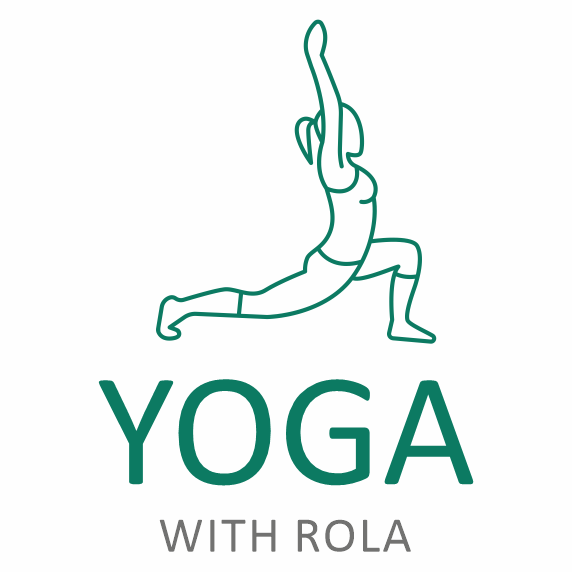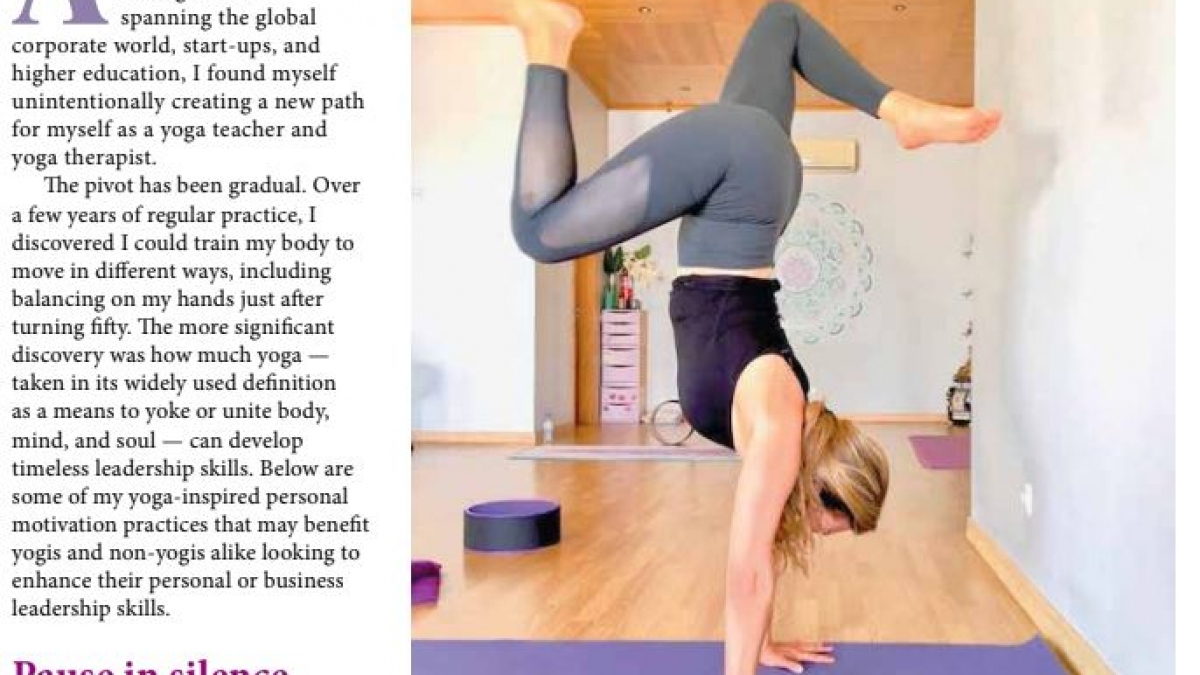(Featured in Yoga Magazine June 2021)
After a three-decade career in marketing and communications management, spanning the global corporate world, start-ups, and higher education, I found myself unintentionally creating a new path for myself as a yoga teacher and yoga therapist.The pivot has been gradual. Over a few years of regular practice, I discovered I could train my body to move in different ways, including balancing on my hands just after turning fifty.
The more significant discovery was how much yoga — taken in its widely used definition as a means to yoke or unite body, mind, and soul — can develop timeless leadership skills. Below are some of my yoga-inspired personal motivation practices that may benefit yogis and non-yogis alike looking to enhance their personal or business leadership skills.
Pause in silence.
A practice I acquired from one of my early teacher training was to stay silent for the first few hours of the day, dedicating that time to yoga practice, including meditation. After the training, I continued to hold that space, adding journaling and other mindful activity to reflect on the day ahead. Only experienced practitioners can sustain sitting in silence long enough to reach a deep meditation state. However, for most people, research confirms that finding just a few quiet minutes can set positive energy for the whole day. In Sanskrit, the original language of yoga, “Mauna” connotes the power of silence in understanding that which is “beyond words” — a way to still the mind and create space to experience higher consciousness. As the 13th-century Persian poet Rumi also reminds us, “the quieter you become, the more you are able to hear.” For ancient Chinese philosopher Lao Tzu, “Those who know do not speak. Those who speak do not know”.
Modern society generally undervalues silence. Social media and other platforms reward the amplification of people’s feelings and opinions. However, to be quiet is more useful than ever because of all the noise. Even if only for a few minutes, dedicating time every day for silent reflection and processing information can improve understanding and communication during the day.
Witness in stillness.
Anyone who has been to a yoga class may have heard the word witness. It is most often used in the final rest pose, “Savasana,” when the teacher invites students to become silent observers of their thoughts and emotions. As a yoga teacher and therapist, I usually encourage my students to witness the rise and fall of the breath as a point of focus, following author Donna Farhi’s recommendation of observing thoughts and sensations as “temporary guests.” In In “Bringing Yoga to Life: The Everyday Practice of Enlightened Living”, Farhi says, “We don’t invite, and we don’t refuse. We don’t suppress, and we don’t indulge. We just let these guests come and go.
Through practice, we find that there is a neutral witness that perceives these passing phenomena but does not falsely take these manifestations to be an accurate representation of itself.” For leaders looking at developing sustained and focused attention, a habit of stepping back from sensations and thoughts (that magical silent pause again) can strengthen the ability to see the bigger picture and make better decisions.
Accept the impermanence of things.
Buddhism, considered the sister tradition of yoga, is a constant reminder that time is short. Therefore, one needs to appreciate and practice gratitude for the present moment.Experienced yoga practitioners apply this concept in various ways, including accepting changes in their bodies. While a handstand might be accessible today, the body might feel different tomorrow and may need to rest from too much strain on the wrists.
Eventually, a more gentle physical practice will evolve to cater to more sensitive joints. If done in the right spirit, the realization of impermanence and loss can make every yoga practice, and moment, a celebration of what the body can do today because nothing lasts. When the world is going through so much disruption, and many people face financial and
personal hardships, illness, and death, reminding oneself of the impermanence of things can help cultivate a sense of gratitude, considered the highest form of yoga.
Choose non-violence to yourself above all.
“Ahimsa,” meaning non-violence, is a fundamental principle in yoga. It is one of the five “Yamas” or restraints described by the “Yoga Sutras,” regarded as the authoritative ancient text of modern yoga. At the start of my yoga journey, as a lifelong vegetarian and someone who has lived through war-torn Lebanon, living a life that causes no harm was intuitive. But as I developed my practice, I injured my knee while pushing into a physical pose when my body was not ready.
The experience made me realize that I was missing the highest form of Ahimsa—an unconditional non-harming attitude to myself. For leaders chasing external goals, especially during challenging, uncertain times, the importance of taking care of one’s health and body sometimes gets sidelined. Even when our lives are going well, practicing Ahimsa takes conscious effort. By taking care of personal needs and achieving personal balance, we can support others — our family, friends, and work colleagues.
Balance effort and ease.
Another basic guiding principle in the Yoga Sutras is that the yoga postures should aim to have two qualities: “Sthira,” a Sanskrit word for steadiness or effort; and “Sukha,” referring to ease, or the ability to remain comfortable. In other words, one should strive for strength and flexibility, avoiding excessive tension or hypermobility. A therapy teacher once told me to hold back when folding into deep hip opening poses. While it may look good on Instagram, my hypermobility was, over the long-term, harming my body.
When I began to focus more on strengthening exercises which she called “containment,” I could feel a sense of steadiness in my practice and off the mat. Similarly, finding this balance between effort and ease can be applied in our daily lives. In relationships, for example, we naturally want to extend ourselves and open doors to others. But sometimes, healthy boundaries are required while keeping an open heart. In a different expression of this principle, Theodore Roosevelt once said, “Keep your eyes on the stars, and your feet on the ground” — aspire for more but remain grounded.
Whichever principle, a key criterion for success both on and off the mat has been applying “Tapa” or discipline. Practicing with disciplined regularity got me unexpectedly to stand on my hands at 50. But more importantly, it helped me strengthen my leadership skills —including resilience, self-compassion, and above all, balance for a better life.



Add a Comment